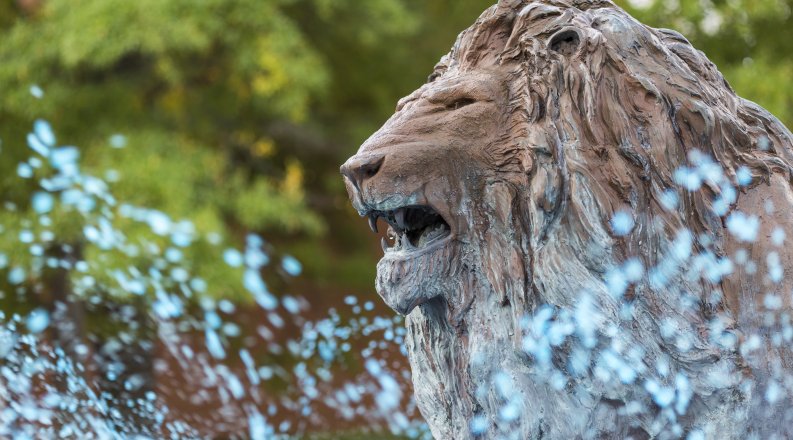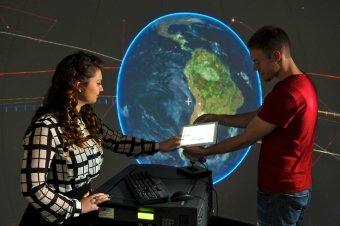Breadth, Not Just Depth:
Not only is the department of modeling, simulation and visualization engineering unique to Old Dominion University (ODU), it is also the first known, stand-alone department dedicated to modeling and simulation (M&S) education in the United States. In supporting a full-fledged department in the subject, ODU took a big step in also recognizing the field's varied applications and potential alliances across the university. Likewise, the faculty within the department emanate from varied backgrounds and areas of expertise, lending to students of the programs the perspectives from differing specialty areas in the discipline.
Facilities:
Among the department's six laboratories, there are spaces dedicated to Undergraduate Projects & Research, Medical Simulations, Applied M&S Research, Collaborative Autonomous Systems, Advanced Engineering Environments and one simply called the CAVE. While it sounds like something one might find on the face of a mountain, the CAVE - which stands for Cave Automated Virtual Environment - in fact exists within an on-campus building and contains several 3D visualization systems. The CAVE is a high-resolution projection-screen virtual reality system. Its screens are arranged within a 10-foot cube and computer-generated images are projected on three walls and a floor which enables users to interact virtually with environments, such as an operating room or a factory floor.
Student Base:
Under the watchful eye of freshly appointed department chair, Rick McKenzie, the department can boast approximately 70 undergraduate students and over 100 graduate students in the current semester. The program is fairly young, graduating its first undergraduate class - of four - in 2013. What makes this first class special? All the students in that first graduating class have matriculated into graduate studies; three of whom continued their studies in M&S at ODU and the last at MIT.
Most Likely to Succeed:
Combining curricula and faculty members that offer a broad approach to engineering, graduates of the department go onto careers ranging from healthcare, transportation systems, and high-performance computing to software, big data, and analytics, to name a few beyond the standard three of modeling, simulation and visualization. In fact, students from the last graduating class of M&S, who impressed supervisors with quick learning and adding on to the capabilities of software the organization uses, were hired by Newport News Shipbuilding because of their excellent programming skills and wide engineering knowledge base.
Forward Thinking:
With a core set of initiatives including medical, transportation systems, big data analytics, high performance computing and military training, the department of modeling, simulation and visualization engineering seeks to both strengthen these initiatives and add onto the offerings for future learners. Two areas in which they look to grow: collaborative autonomous systems and cyber systems security. Collaborative autonomous systems, which pairs nicely with the newly minted Unoccupied Autonomous Systems research cluster on campus, looks at achieving more control in multi-platform systems by streamlining software architectures and human-computer interfaces. Creating a graduate certificate program in cyber systems security also has impact in several areas and industries.
Take a Closer Look:
If you would like to learn more about the modeling, simulation and visualization department at ODU or any of its features described above, please visit http://www.odu.edu/msve. The department will also be featured at two of the premier gatherings for modeling and simulation engineering: I/ITSEC 2014 and the Winter Simulation Conference.




